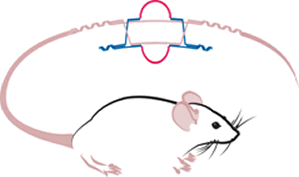

What is the utility of a large scale mouse mutagenesis effort? Recent technological advances in molecular genetics now support large-scale production and analysis efforts of induced genetic mutations in model systems ranging from microorganisms to mammals. Rapidly elucidating gene function using these models has lead to insights about specific gene and genome-wide functional and regulatory relationships. In addition to advancing the biological sciences, mouse genetics in particular exemplifies the translational aspect of model organism research. Through research utilizing the mouse as a model for human disease, investigators can translate basic biological phenomena into a human health perspective. For example, mouse models have added to our understanding of human obesity, cancer, cardiovascular disease, diabetes, Parkinson's and Alzheimer's, to name just a few. The value of the mouse as a model organism is derived from the fact that the mouse has similar developmental, physiological, biochemical, and behavioral patterns to humans. It is worth noting that the similarities between human and mouse are supported at the genotypic level - 99% of mouse genes have homologs in humans. Because of the suite of available molecular tools, specifically the long history of making and studying mouse mutants, along with the genomic and phenotypic similarities with humans, advances in mouse genetics continue to be a driving force in a broad range of biomedical research activities. For more on the scientific utility of mouse knockouts, see the Knockout Mouse Fact Sheet: http://www.genome.gov/12514551 |
![]()
